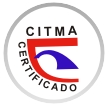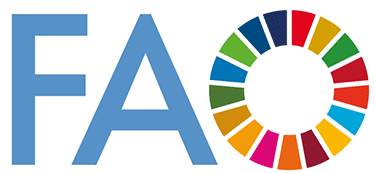Submissions
Author Guidelines
PUBLICATION RULES
Authors interested in publishing in the journal Agroecosistemas should submit their papers through the journal's platform, accessible at: https://aes.ucf.edu.cu/index.php/aes/about/submissions. The journal will only accept unpublished papers that are not under consideration for publication in other serial publications. The language of publication will be Spanish; however, articles will also be accepted in English and Portuguese if one of the authors is from a country where that language is spoken or if they have been translated by a professional translator.
On the journal's website, you will find instructions to help you create a user account and submit your manuscript.
Contributions should be written in Microsoft Office Word (“.doc” or “.docx”), using Calibri font, 12-point size, with 1.5 line spacing. The page size should be 21.59 cm x 27.94 cm (letter format). The top and bottom margins should be 2.5 cm, while the right and left margins should be 2 cm.
Other font sizes should be used for titles and subtitles in the article according to the provided template.
Manuscript Structure
Contributions submitted to the editorial staff of the journal should have the following structure:
- Length between 5,000 and 10,000 words.
- TITLE in Spanish and English (maximum of 15 words). Calibri 14-point font.
- E-mail: (email address of each author, preferably institutional).
- ORCID identifier: in the following format and without a period: https://orcid.org/0000-0003-2092-4924. It is mandatory that all authors of the article have their ORCID profile updated with their employment, main publications, and that it be visible to the public.
In the case of multiple authors, the Author for correspondence must be designated, which should be indicated after the names of the institutions as follows:
Author for correspondence: (Insert the author's email address here).
- Abstract in Spanish, up to 250 words, including the presentation of the problem, general objective, methodology used, and main results achieved. An English version of the abstract will also be required.
- Keywords in Spanish and English (three to ten keywords in each language), separated by commas. It is suggested to use the UNESCO Thesaurus.
- Sections: Introduction; Materials and Methods; Results and Discussion; and Bibliographical References for research articles. Other types of contributions should include: Introduction, Development, Conclusions (never listed), and Bibliographical References. If there are annexes, they should be included at the end of the document.
Download an article template that will assist you in conforming to these submission guidelines.
Other Formal Aspects
- Pages should be numbered in the upper right corner.
- Tables should be numbered in order of appearance, with their title placed at the top (Calibri 11-point font). They should be cited in the text as follows: Table 1 or (Table 1).
- Figures should not exceed 100 KB and should not be wider than 10 cm. They should be submitted in a separate folder in image format: .jpg or .png. In the text, they should be numbered according to their order, with their title placed at the top (Calibri 11-point font). They will be cited as follows: Figure 1 or (Figure 1).
- You may include formulas; please follow the APA 7th Edition standards for their use. The formulas will be numbered and should be referenced in the body of the paper.
- Acronyms should be defined in the text the first time they are used, in parentheses, and should not be conjugated in the plural. For example: Ministry of Higher Education (MES).
- Notes should be placed at the bottom of the page and numbered with Arabic numerals. Only explanatory notes are allowed, and they should be no longer than 60 words.
- Annexes should support ideas presented in the paper and will be referenced in the text as follows: Annex 1 or (Annex 1).
- The main author must upload to the platform a document, in his/her name and on behalf of all co-authors, stating that there is no conflict of interest related to the article and specifying the contributions made by each author under the CRediT taxonomy.
Citations and Bibliographical References
Citations and bibliographic references should conform to the style of the American Psychological Association (APA), 7th edition (2019). The accuracy of citations and bibliographic references is the responsibility of the author(s) of the article. A maximum of 25 sources should be used, preferably scientific articles.
It is important to prioritize sources from scientific journals indexed in WOS, Scopus, and SciELO. Avoid citing gray literature and outdated sources (maximum of 5 years old).
In the manuscript, sources cited from scientific journals indexed in Scopus and WOS should be highlighted. Avoid self-citations to the journal Agoecosistemas; use a maximum of one.
Although the APA standard does not require it, please provide the URL or DOI of the document whenever possible.
In the document, citations will be indicated in the following format: Surname (year) if the sentence includes the surname(s) of the author(s). If this information is not included, the format (Surname, year) will be used. Only the page number should be included in textual citations. Only works cited in the text should be listed at the end of the article, presented in alphabetical order with a hanging indent.
For each type of source, the following guidelines should be applied:
Book
Surname, A. A., & Surname, B. B. (Year). Title. Publisher.
Example:
Cruz Ramirez, M. (2009). The Delphi Method in Educational Research. Academia.
Book Parts
Surnames, A. A., & Surnames, B. B. (Year). Title of chapter or entry. In A. A. A. Last names (Eds.), Title of Book (pp. xx-xx). Publisher.
Example:
Picó, F. (2004). Arecibo, sun and serene. In F. Feliú Matilla (Ed.), 200 Years of Literature and Journalism: 1803–2003 (pp. 129-134). Ediciones Huracán.
Journal Article
Surnames, A. A., Surnames, B. B., & Surnames, C. C. (Date). Title of the article. Title of the Publication, Volume(Number), xx-xx. URL
Example:
López, L. B. (2006). The literature search: A key component of the research process. DIAETA, 24(115), 31-37. https://www.fmed.uba.ar/sites/default/files/2017-12/busqueda_biblio.pdf
Thesis
Surname, A. A. (Year). Title of the Thesis (Type of thesis). Name of the Institution.
Example:
Van Hiele, P. M. (1957). The Problem of Comprehension: In Connection with the Comprehension of School Children in the Learning of Geometry (Doctoral dissertation). Royal University of Utrecht.
Paper
Surnames, A. A., Surnames, B. B., & Surnames, C. C. (Year). Title of the paper (Type of contribution). Name of the Event, City, Country.
Example:
Rozemblum, C., Unzurrunzaga, C., Pucacco, C., & Banzato, G. (2012). Evaluation parameters for the inclusion and indexing of scientific journals in local and international databases: Analysis of their contribution to the quality of Humanities and Social Sciences publications (Paper). VII Sociology Conference of the UNLP, La Plata, Argentina.
Audiovisual Media
Surname, A. A. of the director (Date). Title of the Source. [Type of media]. Production Company.
Example:
Cameron, J. (1997). Titanic. [Film]. 20th Century Fox.
Electronic Sources
Surname, A. A. (Year). Title of Source. Name of the Site. URL
Example:
Bruguera i Payà, E. (2012). Proceso de búsqueda y localización de información por Internet. UOC. http://openaccess.uoc.edu/webapps/o2/bitstream/10609/17829/1/UW07_00071_02418.pdf
Institutional Author
Printed
Country. Name of the Institution (Year). Title of the Source. Publisher.
Example:
Ecuador. National Secretariat of Planning and Development (2013). National Development Plan / National Plan for Good Living 2013-2017. SENPLADES.
Online
Country. Name of the Institution (Year). Title of the Source. Publication where it is hosted. URL
Example:
Ecuador. National Constituent Assembly (2008). Political Constitution of the Republic of Ecuador. Official Register 449. https://www.cec-epn.edu.ec/wp-content/uploads/2016/03/Constitucion.pdf
Unpublished Manuscript
Surnames, A. A., Surnames, B. B., & Surnames, C. C. (Date). Title of Source (Status of manuscript). Institution.
Example:
León González, J. L., López Bastida, E. J., & Mora Quintana, E. C. (2019). Impact and Visibility of Scientific Journals at the University of Cienfuegos (Unpublished manuscript). University of Cienfuegos.
Citations in the text with three or more authors should be cited as the last name of the first author followed by “et al.” However, in the bibliography, all authors must be listed.
See a summary of the APA 7th Edition standard at: https://normas-apa.org/wp-content/uploads/Guia-Normas-APA-7ma-edicion.pdf
Notes:
- The journal does not charge for publication, nor does it undertake to compensate the authors, as they cede the rights to publish their articles to the journal.
- The Editorial Board reserves the right to make any stylistic corrections or changes it deems appropriate to improve the quality of the article.
Copyright Notice
The publishing house “Universo Sur”, of the University of Cienfuegos, publishes the contents of the Revista Científica Agroecosistemas under a Creative Commons Attribution-NonCommercial-NoDerivs 4.0 International License.
The contents of this publication may be reproduced, in part or in whole, provided that it is reproduced verbatim and the source is acknowledged.
Privacy Statement
Privacy Statement
The names and e-mail addresses entered in Culture, Communication and Development will be used exclusively for the purposes declared by this journal and will not be available for any other purpose or to any other person.
The members of the Editorial Team undertake to preserve the identity of the authors submitting articles until publication, if any, and to preserve their identity in case of rejection.
Manuscripts under review will not be used for any other purpose by the staff involved in the process, and will only be disclosed at the time of publication. In case of rejection, they will be archived in the journal's historical record, and no one with access to this archive will be able to use them for any purpose other than that for which they were sent.






